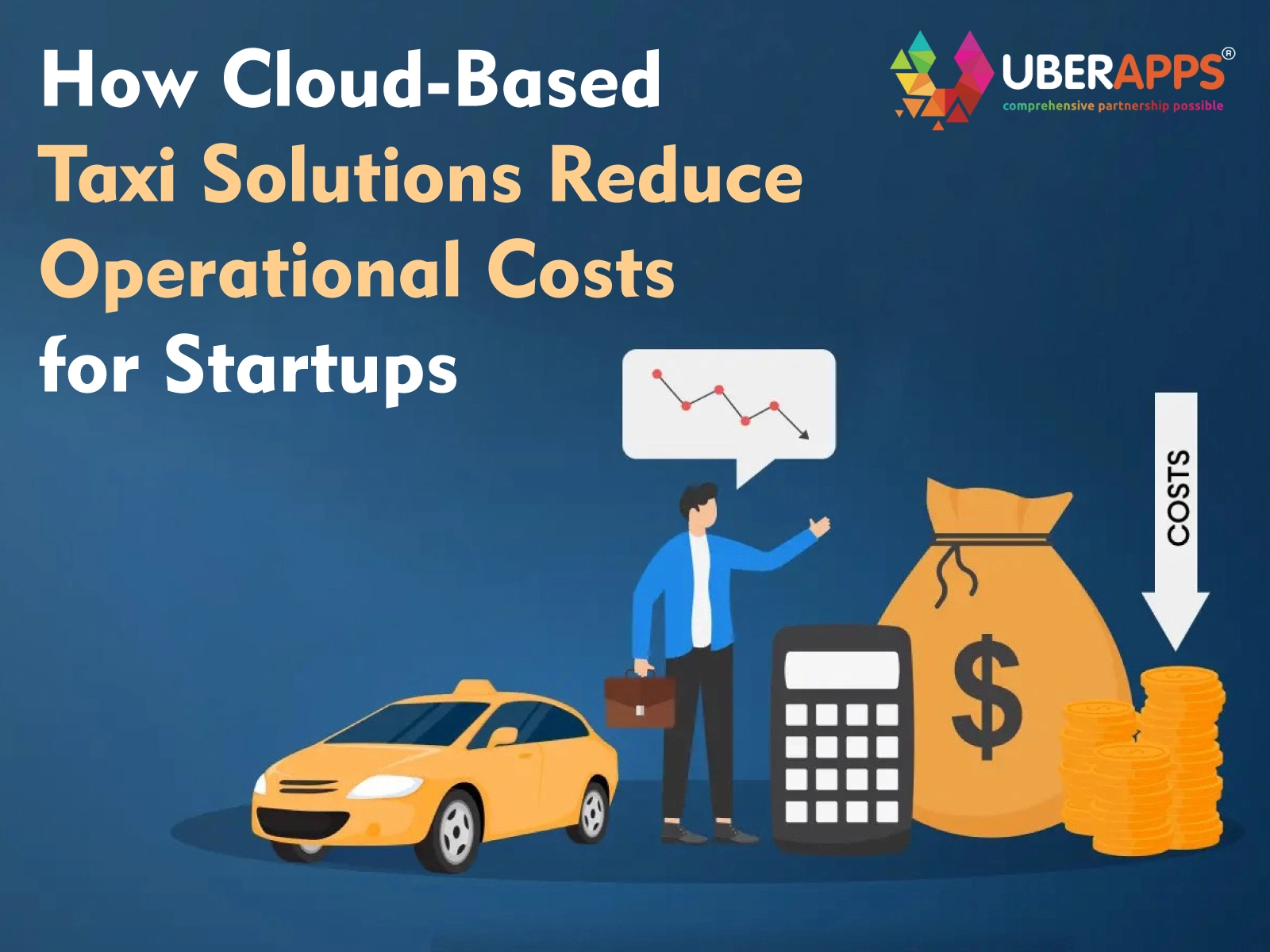
How Cloud-Based Taxi Solutions Reduce Operational Costs for Startups
Starting a taxi business has always been capital-intensive. From maintaining fleets to hiring dispatch staff and developing custom apps, expenses quickly add up. For startups with limited budgets, this makes entering the ride-hailing industry a challenge.
This is where cloud-based taxi solutions step in. By eliminating the need for expensive infrastructure and reducing overhead, these platforms empower entrepreneurs to launch, operate, and scale taxi services at a fraction of the traditional cost.
Cloud platforms combine mobile app development, IoT integrations, connected apps, and smart device apps into subscription-based models, helping startups save money while still competing with global giants like Uber and Bolt.
Cloud-based taxi solutions are revolutionizing how startups enter the ride-hailing industry. By eliminating expensive infrastructure, reducing staffing needs, and offering subscription-based models, these platforms drastically cut operational costs. Startups gain access to white-label mobile apps, IoT integrations, connected apps, and real-time analytics without investing in custom development. From automated dispatch and integrated payments to scalability and global expansion, cloud solutions give entrepreneurs a competitive edge. This blog explores how cloud-based taxi apps lower expenses, improve efficiency, and set the foundation for sustainable growth. For startups, they are not just a cost-saving option they are the future of urban mobility.
Why Operational Costs Matter for Taxi Startups
Running a taxi business isn’t just about cars and drivers. Startups face multiple cost centers:
- Technology development – Building passenger, driver, and admin apps.
- Dispatch systems – Traditional servers and software licenses.
- Maintenance – Constant upgrades and bug fixes.
- Staffing – Customer support, IT teams, and dispatchers.
- Marketing & growth – Attracting new riders and retaining drivers.
Key takeaway: Without cost optimization, many taxi startups fail before reaching profitability. Cloud-based taxi solutions directly address these challenges.
What Are Cloud-Based Taxi Solutions?
Cloud-based taxi solutions are ready-to-deploy platforms hosted on secure servers, accessible via subscription. Instead of spending months and millions on custom software, startups can rent a white-label taxi app system that includes:
- Passenger app
- Driver app
- Admin dashboard
- Payment integrations
- Analytics and reporting tools
Because everything runs on the cloud, startups don’t need to invest in expensive servers or large IT teams.
How Cloud-Based Taxi Solutions Reduce Operational Costs
1 Lower Upfront Development Costs
Avoiding Custom Builds
Custom mobile app development can cost $50,000–$200,000, with timelines of 12–18 months. Cloud-based taxi apps allow startups to launch within weeks, paying only a subscription fee.
White-Label Branding
Startups still maintain their brand identity—logos, colors, and names—without the cost of building apps from scratch.
2 No Server Maintenance
Cloud Hosting Benefits
Traditional dispatch software requires local servers, which demand purchase, installation, and IT staff. Cloud solutions eliminate these costs by hosting everything online.
Pay-As-You-Go Model
Startups only pay for the resources they use, scaling up or down based on demand.
3 Automated Updates and Maintenance
No Downtime
Custom apps often require costly upgrades. Cloud-based taxi app development receive automatic updates, ensuring new features without added expense.
Continuous Innovation
Providers roll out AI-driven features, IoT integrations, and analytics dashboards at no extra cost.
4 Reduced Staffing Requirements
Automated Dispatch
Instead of hiring manual dispatchers, cloud systems use algorithms to allocate rides in real time.
Lean IT Teams
Startups don’t need large technical teams—cloud providers handle bugs, scaling, and maintenance.
5Integrated Payment Systems
Cost Savings on Transactions
Cloud-based platforms come with built-in payment gateways—wallets, UPI, cards, and BNPL—saving startups from negotiating or building integrations separately.
Instant Settlements
Automated payouts reduce financial management overhead, freeing resources for growth.
6 Smarter Resource Allocation
Real-Time Analytics
Cloud taxi apps include dashboards for ride demand, earnings, and driver performance.
Data-Driven Cost Savings
Operators can optimize routes, monitor fuel usage, and plan driver incentives based on analytics.
7Scalability Without Extra Costs
Elastic Infrastructure
Startups can expand into new cities or scale during peak hours without buying new servers.
Global Expansion Made Easy
Multi-language and multi-currency features reduce localization costs, enabling faster global growth.
Benefits Beyond Cost Reduction
While the primary advantage is cost savings, cloud-based taxi solutions also:
- Improve passenger experience with faster booking and real-time tracking.
- Increase driver satisfaction with transparent payouts and fair ride allocation.
- Boost competitiveness by offering modern features that rival established ride-hailing apps.
Key takeaway: Lower costs are only part of the picture—cloud solutions also drive revenue growth.
Why Startups Prefer Cloud Taxi Apps Over Traditional Systems
Unlike traditional systems that require heavy investments, cloud-based platforms offer:
- Faster deployment (weeks vs. years).
- Subscription-based affordability.
- Automatic updates without downtime.
- Scalable infrastructure for startups of all sizes.
This makes cloud-based solutions the logical choice for new entrants in the ride-hailing market.
Case Studies: Cloud Taxi Apps in Action
- Africa: A startup in Lagos launched with a cloud platform and cut technology expenses by 60%. Within six months, bookings grew by 35%.
- Europe: A Berlin-based fleet went live in 6 weeks using a white-label app and achieved ROI within nine months.
- Asia: A startup in India scaled to 5 cities in a year without buying extra servers, thanks to cloud scalability.
These examples highlight the real-world impact of cloud solutions on startup survival and profitability.
Challenges and Considerations
Cloud taxi apps are powerful, but startups should consider:
- Data security – Choose providers with GDPR-compliant systems.
- Internet reliability – Cloud apps depend on connectivity.
- Vendor lock-in – Select providers with flexibility and customization.
Pro tip: Partner with a trusted provider that offers long-term support, not just quick deployments.
The Future of Cloud-Based Taxi Solutions
Looking ahead, cloud taxi solutions will integrate even deeper with:
- AI copilots for drivers.
- IoT-powered telematics for safety and maintenance.
- Electric vehicle (EV) support, including charging station locators.
- Mobility-as-a-Service (MaaS) ecosystems, combining taxis with buses, bikes, and metro systems.
For startups, this means not only lower operational costs but also future-ready platforms that can adapt to industry trends. The future of ride-hailing belongs to startups that embrace cloud-based taxi solutions. By replacing expensive infrastructure with cloud hosting and subscription-based models, these platforms lower operational costs dramatically. Startups no longer need to worry about servers, large IT teams, or constant app upgrades. Instead, they can focus on growth, customer satisfaction, and innovation.
Cloud taxi apps bring together mobile app development, IoT integrations, connected apps, and smart device apps to deliver powerful, future-ready platforms. Automated dispatch systems, integrated payments, and real-time analytics allow startups to operate leaner and smarter while still competing with giants like Uber and Bolt.
As the industry shifts toward electric vehicles, AI copilots, and multimodal transport, cloud-based platforms will remain the foundation of success. For startups, the message is clear: adopting cloud taxi solutions is not just about saving money—it’s about building a sustainable, scalable business that thrives in the future of urban mobility.
Conclusion
The future of ride-hailing belongs to startups that embrace cloud-based taxi solutions. By replacing expensive infrastructure with cloud hosting and subscription-based models, these platforms lower operational costs dramatically. Startups no longer need to worry about servers, large IT teams, or constant app upgrades. Instead, they can focus on growth, customer satisfaction, and innovation.
Cloud taxi apps bring together mobile app development, IoT integrations, connected apps, and smart device apps to deliver powerful, future-ready platforms. Automated dispatch systems, integrated payments, and real-time analytics allow startups to operate leaner and smarter while still competing with giants like Uber and Bolt..
As the industry shifts toward electric vehicles, AI copilots, and multimodal transport, cloud-based platforms will remain the foundation of success. For startups, the message is clear: adopting cloud taxi solutions is not just about saving money—it’s about building a sustainable, scalable business that thrives in the future of urban mobility..
Ready to launch your cloud-powered taxi app? Contact UberApps today and start building your success story.
FAQS
1. How do cloud-based taxi apps save money for startups?
They eliminate server costs, reduce staffing needs, and provide subscription-based pricing instead of costly custom app development.
2. Are cloud taxi apps scalable for growing fleets?
Yes, cloud infrastructure is elastic, allowing startups to expand into new markets without major expenses.
3. Do cloud taxi apps support integrated payments?
Yes, most include wallets, UPI, credit cards, and BNPL, reducing transaction costs and simplifying settlements.
4. Can small-town startups benefit from cloud taxi solutions?
Absolutely. Cloud apps scale down for small operators and scale up for metropolitan fleets.
5. Are cloud taxi solutions secure for passenger data?
Reputable providers use advanced encryption and comply with global standards like GDPR.
Author's Bio

Vinay Jain is the Founder of UBERApps and brings over 10 years of entrepreneurial experience. His focus revolves around software & business development and customer satisfaction.

